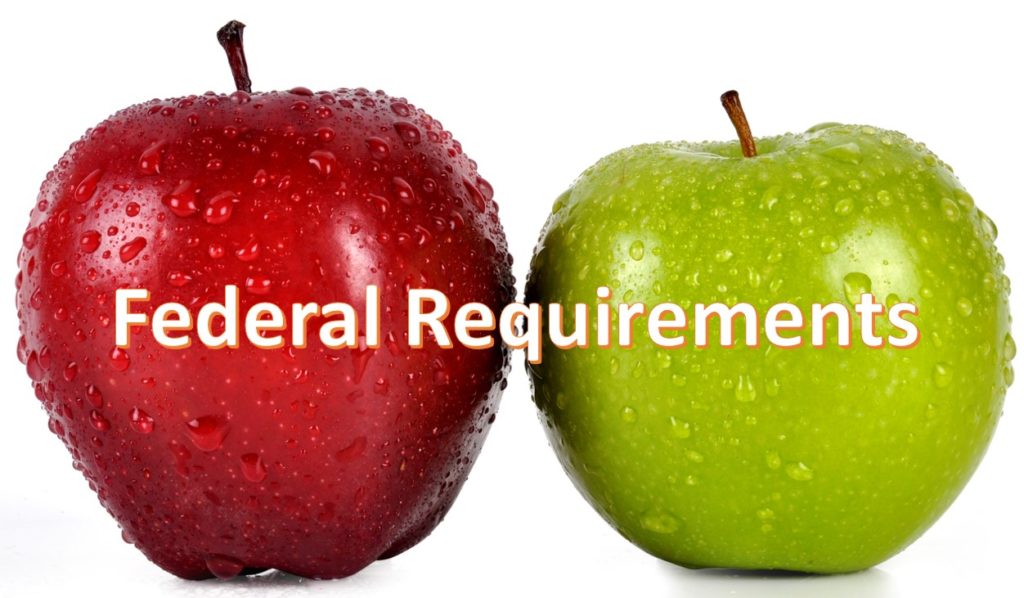Answering the Mail the Wrong Way (Pt. 1)
Every company that does business with the Federal government wants to gain a competitive advantage, to set themselves apart from the typically stiff competition. Problem: Most government Requests for Proposal (RFP) have a ton of normalizing requirements that make separation difficult at best. I have spoken to dozens of Federal capture and proposal professionals that express that no matter the stated evaluation method that the government customer provides, most proposals end up being differentiated by price/rates, or the dreaded Lowest Price Technically Acceptable (LPTA) response. What do you do if you really want to respond without wasting valuable company resources on a bid you believe you cannot win?
The Trouble with Federal Requirements
The response requirements for many to most RFPs seem designed to try and quickly eliminate 2/3 of the organizations that respond, to thin out the riff raff. When you’re focused on the correct margin spacing, font point size for graphics and total page count limit to avoid automatic disqualification, there is a sense that the Feds really get off on this type of control over little things so that you’re dancing like circus bears. Perhaps. Truth bomb—they are trying to DQ many respondents with the Federal requirements to respond.
The Government Evaluation Process
When the Federal customers release a Request for Proposal, they often get dozens of submitted responses, such is the thirst for the Federal monetary nectar of an eventual contract. They almost always have a very limited number of people that can actually review these effectively. Why do you think it takes so long to know if you won or lost? If you lost, you are often lucky to even get the Dear John letter, much less a review. In large part, the requirements are written as such to rapidly streamline this evaluation process and get through the slog of work to determine a winner.
Stylistic requirements and narrow must haves, ranging from socio-economic status to past performance format, serve as check-elimination boxes to thin the stack. Too much opportunity for you to respond creatively often leads to confusion for evaluators. It isn’t easy to focus on showcasing your uniqueness of value when distracted by this stuff.
The No-Favorites RFP
Another reason for the conformist Federal requirements is that the government must avoid the perception of favoritism to a certain vendor. No Conflict of Interest (COI) allowed. This guiding principal has the further purpose of documenting the Federal review process to defend the eventual protest by the losers, which happens more than Federal lawyers would like. This helps to make the Federal requirements a bit over-prescriptive, even when asking for technological innovation. Over definition of the technical approach, of course, defeats creative thinking and effectively paints responding companies into corners. The government gets what they want in terms of an apples to apples comparison (see LPTA above), but the process prevents them from getting the best solutions to be had. They get ‘acceptable’ solutions.
Jumping Through Federal Requirements Hoops
So what exactly, do most companies do? They answer the mail.
Point for Point
Companies will traditionally get so caught up in answering the mail that they respond point for point on every question asked. This is giving the customer what she wants, it is thought. One downside of this process is that it can drive a lot of question restatement from respondents, taking the question and making it an affirmative statement that yes, you will deliver on each requirement. Seasoned proposal writers know this is a definite No-No; in fact, I have heard Q&A at more than one Industry Day from government evaluators that this is the number one, hair-pulling thing that they routinely see. Yet the government often lacks the self-awareness to recognize that the RFP is partially responsible for this repeat game.
Just so the Federal evaluators don’t get confused, many companies create a cross-reference table of a line by line correlation of answers to Federal requirements. This navigation tool is not a bad idea, but it does further reinforce that answering the mail like everybody else is the most important part of your response. It is not. Becoming the low-risk option is.
You are RFP Apple
When we feel forced into conforming in this herd mentality to Federal requirements, when “don’t rock the RFP boat” becomes the north star of your proposal response, you have become an RFP apple. If you don’t want consideration of your firm to be LPTA-based, this is the last fruit you want to be.
Read how to answer the mail the right way in the next FedTrax post.




